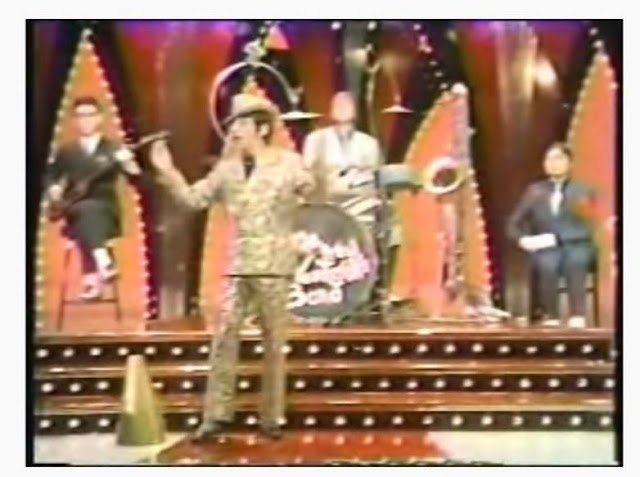That Guy with the Megaphone -- Garbo
Megaphones were necessities for singers in early dance bands as amplification was an evolving technology and a lot of old venues weren't wired for electricity. And with dubious wiring practices, no one wanted electrification in potentially-wet outdoor gathering places like lakeside pavilions.
Rudy Vallee, who made his mark singing through a megaphone to crowds of dancers. had a really nice voice. Here's a YouTube clip of famous vocalist doing "You Ought To Be in Pictures."
Vallee was a New Englander, born in Vermont and raised in Maine. His father came from French-speaking Canadian stock and his mother was Irish. Rudy enlisted with false papers to fight in World War I, and then was mustered out when his real age was discovered. He then went into showbiz and found early success.
Vallee was a saxophone player, bandleader, vocalist, and actor but at one time it was almost impossible to picture him in any way except holding a megaphone. The singing megaphone wasn't as big as the cheering-on version used by "yell leaders" at football games. In the photo below, the young George Bush holds a Yale football megaphone.
Fast forward to the 1970s!
The New Vaudeville Band, which had the hit "Winchester Cathedral," went for a 1920s sound with a hollow, buzzing vocal which sounded like it was done through a megaphone. In live performances, the lead singer (credited as "Tristam VII, Earl of Cricklewood") used a neither a singing megaphone nor a stadium model, but something more like the megaphone used by film directors in the early days of Hollywood. This was probably in part because modern audiences expected a singing megaphone to be large, and also because the vintage ones from the 1920s were collector's items and hard to find. It was just a prop anyway; the recording engineer had created the sound on the record, and the live performances for television were lip-synced.
Like Rudy Vallee, The New Vaudeville Band cam to be associated with the megaphone even if they weren't using it. You see upright megaphone shapes in the backdrop for this "Hollywood Palace" performance even though the band was doing their follow-up hit "Peek-a-Boo. And in the photo below, note the gilt megaphone on the floor at the singer's right.
Okay, back to Rudy Vallee's day:
In the video below, we see the vocalist doing the credits, including his own "announcing and directing," for a live recording. This was another reason for the megaphone. By the time the 1920s turned into the 1930s, microphones were used for recordings and for radio broadcasts, but just after the Great War, the master of ceremonies was just beginning to become a common figure in entertainment. And before the radio networks were formed, there were no staff announcers, so vocalists or instrumentalist who were also bandleaders introduced shows and then did the closing as well.
Next week, the yell-leader megaphone comes into use as Rudy Goes Collegiate!
Garbo






Comments
Post a Comment